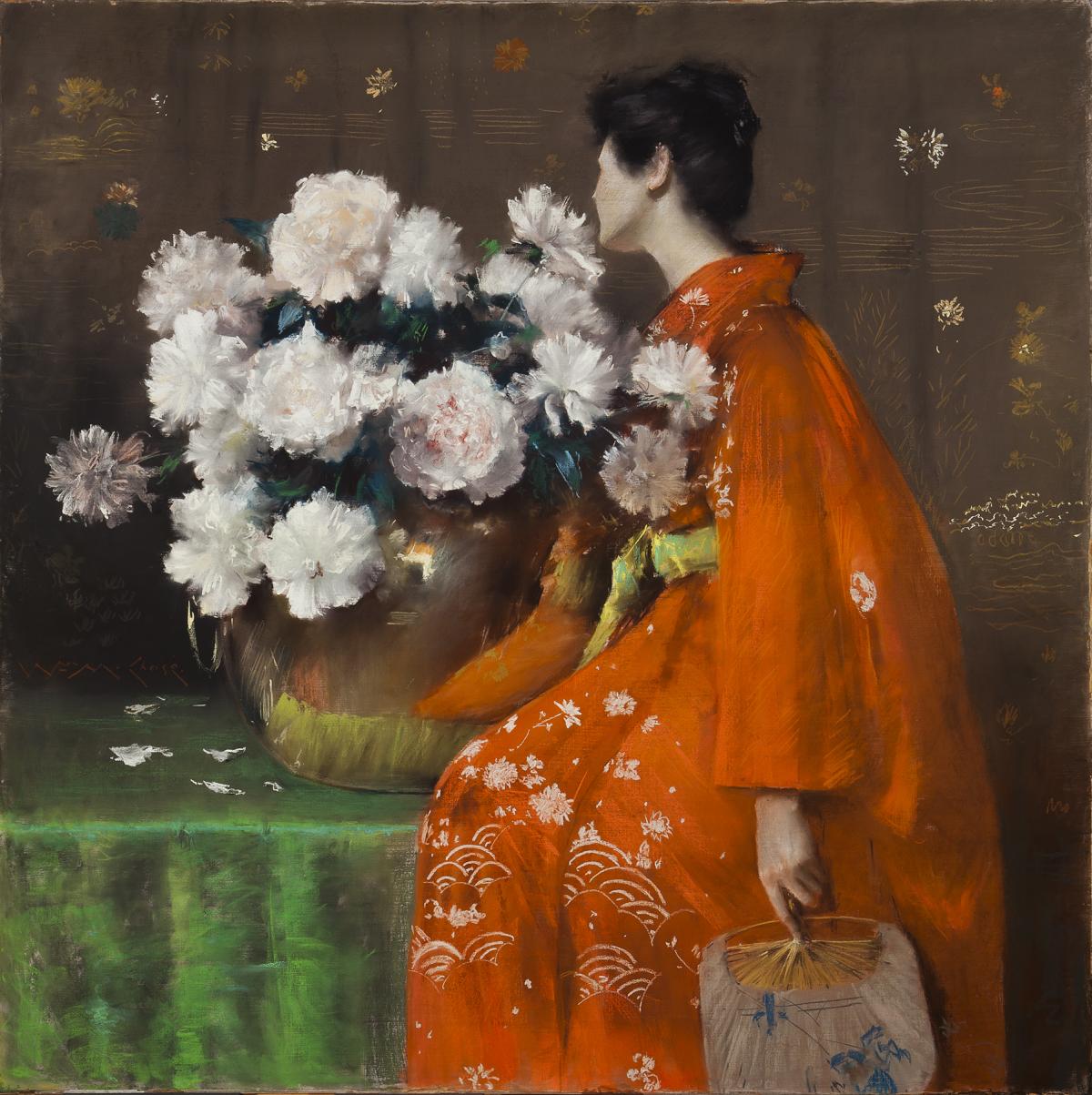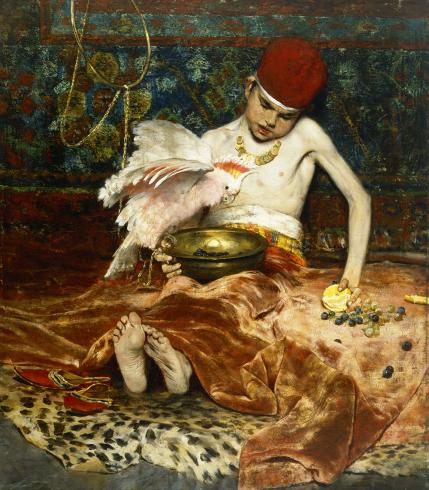William Merritt Chase
A Modern Master

American artist William Merritt Chase (b. Indiana, 1849–d. New York, 1916), a renowned figure in the international art circles of the late 19th and early 20th centuries, was a brilliant observer of contemporary life, an innovative painter, and an influential teacher. This retrospective presented on the centennial year of the artist’s death explores the full range of Chase’s multifaceted artistic practice, from striking portraits and still lifes to glorious urban park scenes, landscapes, and interiors. In a career that straddled two continents and two centuries, Chase was, in the words of American art critic Frank Jewett Mather, “a citizen of the world.”
Featuring more than 70 artworks, this exhibition examines Chase’s achievements spanning his four-decade long career. The exhibition starts with works from his formative years in Munich, where he studied Dutch, Spanish, and French masters, and follows his subsequent career in New York City where he established himself as a tastemaker in his grand Tenth Street Studio. Chase spent summers in Long Island directing the largest plein-air school, and later established the Chase School of Art, all the while exhibiting his work to wide acclaim in both America and Europe. The exhibition also focuses on Chase’s role as a highly influential and devoted teacher, who trained and inspired the next generation of American artists, from Georgia O’Keeffe and Marsden Hartley to Edward Hopper and Joseph Stella.
The exhibition includes several fine examples of Chase’s pastels to highlight the integral role the medium played within Chase’s oeuvre. A co-founder of the progressive Society of American Painters in Pastel, Chase was a leader in the late 19th-century revival of pastel painting and one of its most innovative practitioners. Throughout his career, Chase experimented with pastel alongside his work in oil, translating the painterly qualities of wet color to the velvety effects of dry pigment.
William Merritt Chase: A Modern Master provides a nuanced understanding of the artist’s vital place within the history of American art and his lasting legacy in the art of our time.
Teacher Extraordinaire
As a teacher he probably exercised a wider influence on American painting than any other artist has ever done.—Kenyon Cox, 1922
William Merritt Chase began his teaching career in 1878 at one of the first established art schools in America, The Art Students League. The school, founded in New York in 1875 by artists seeking to break free from the academic, restrictive conventions of the National Academy of Design, offered a more liberal approach sympathetic to the new modern spirit in American art. There Chase began what would become a lifelong commitment to teaching alongside his artistic practice, quickly establishing a reputation as a magnetic yet demanding teacher.
Chase divided his teaching among all the major art schools in America at the time. He taught at The Art Students League (1878–1896 and 1907–1911), Brooklyn Art School (1887–1895), Art Institute of Chicago (1894; 1897–98), Pennsylvania Academy of the Fine Arts (1896–1909), and Hartford Art School (1900–1905). Chase even established the Chase School of Art, later renamed the New York School of Art (1896–1907). For 12 years, he directed the Shinnecock Summer School of Art (1891–1902), the largest plein-air art school in America. In later years, he held summer classes abroad in Europe and also in California. Chase’s instruction impacted the lives of thousands of students.
Chase instilled in his students his love of painting and encouraged them to pursue what he considered to be “one of the most honorable of all professions.” In regular demonstrations in which Chase dashed off paintings in one sitting, he modeled the technical virtuosity that he sought to develop in his students. As Chase told his students: “Play with your paint, be happy over it, sing at your work.”
On view in the galleries adjoining the Chase exhibition is a selection of works by Chase’s students from the Phillips’s permanent collection. Although many of the works were not completed during Chase’s lifetime, they provide a glimpse into the impact of his pedagogy on the next generation of American artists in the early 20th century.
Exhibition Support
The exhibition is organized by The Phillips Collection, the Museum of Fine Arts, Boston, the Fondazione Musei Civici di Venezia, Venice, and the Terra Foundation for American Art.
With the generous support of the Terra Foundation for American Art


Additional support is provided by The Mr. and Mrs. Raymond J. Horowitz Foundation for the Arts, Share Fund, and the MARPAT Foundation.
Brought to you by the Exhibition Committee for William Merritt Chase: A Modern Master: Robert Rea, Toni A. Ritzenberg, and Arthur and Barbara Rothkopf.
Additional in-kind support provided by








